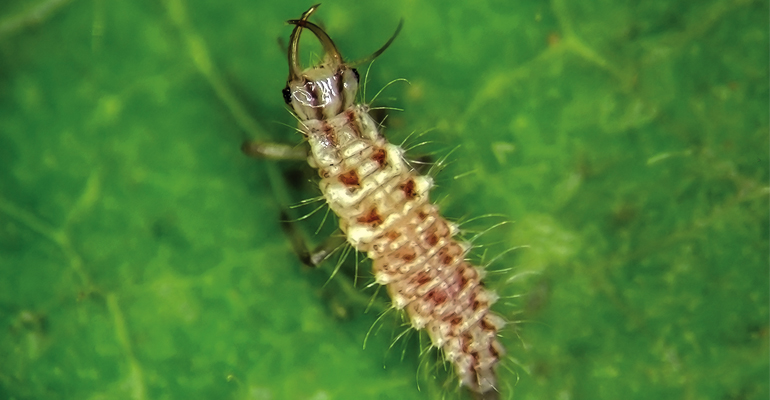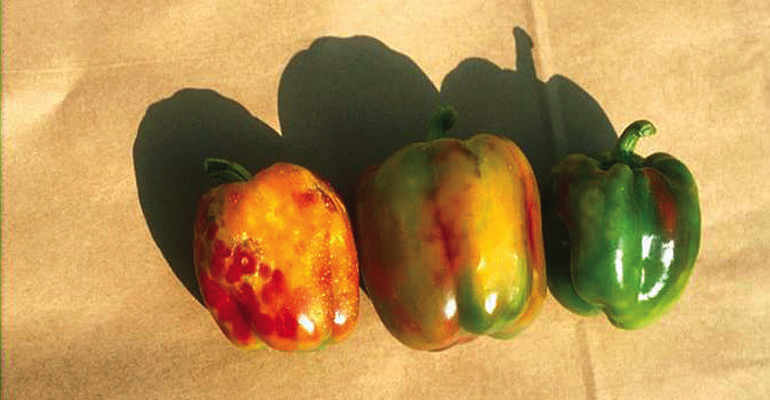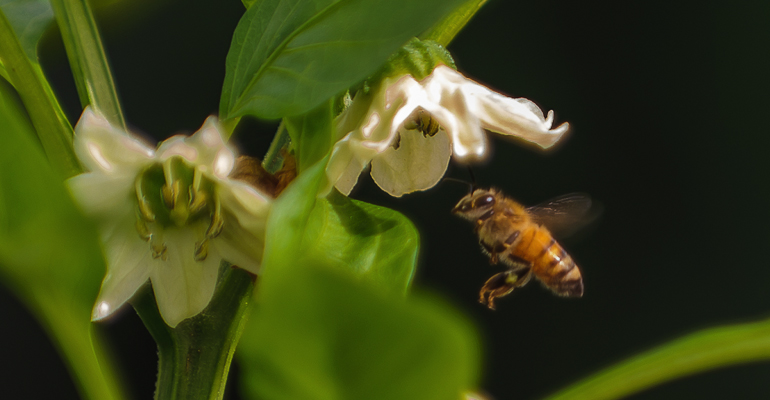Plant Protection
Maecenas eu placerat ante. Fusce ut neque justo, et aliquet enim. In hac habitasse platea dictumst. Nullam commodo neque erat, vitae facilisis erat. Cras at mauris ut tortor vestibulum fringilla vel sed metus. Donec interdum purus a justo feugiat rutrum. Sed ac neque ut neque dictum accumsan. Cras lacinia rutrum risus, id viverra metus dictum sit amet. Fusce venenatis, urna eget cursus placerat, dui nisl fringilla purus, nec tincidunt sapien justo ut nisl. Curabitur lobortis semper neque et varius. Etiam eget lectus risus, a varius orci. Nam placerat mauris at dolor imperdiet at aliquet lectus ultricies. Duis tincidunt mi at quam condimentum lobortis.
Integer elementum massa at nulla placerat varius. Suspendisse in libero risus, in interdum massa. Vestibulum ac leo vitae metus faucibus gravida ac in neque. Nullam est eros, suscipit sed dictum quis, accumsan a ligula. In sit amet justo lectus. Etiam feugiat dolor ac elit suscipit in elementum orci fringilla. Aliquam in felis eros. Praesent hendrerit lectus sit amet turpis tempus hendrerit. Donec laoreet volutpat molestie. Praesent tempus dictum nibh ac ullamcorper. Sed eu consequat nisi. Quisque ligula metus, tristique eget euismod at, ullamcorper et nibh. Duis ultricies quam egestas nibh mollis in ultrices turpis pharetra. Vivamus et volutpat mi. Donec nec est eget dolor laoreet iaculis a sit amet diam.
Etiam aliquam sem ac velit feugiat elementum. Nunc eu elit velit, nec vestibulum nibh. Curabitur ultrices, diam non ullamcorper blandit, nunc lacus ornare nisi, egestas rutrum magna est id nunc. Pellentesque imperdiet malesuada quam, et rhoncus eros auctor eu. Nullam vehicula metus ac lacus rutrum nec fermentum urna congue. Vestibulum et risus at mi ultricies sagittis quis nec ligula. Suspendisse dignissim dignissim luctus. Duis ac dictum nibh. Etiam id massa magna. Morbi molestie posuere posuere.
In facilisis scelerisque dui vel dignissim. Sed nunc orci, ultricies congue vehicula quis, facilisis a orci. In aliquet facilisis condimentum. Donec at orci orci, a dictum justo. Sed a nunc non lectus fringilla suscipit. Vivamus pretium sapien sit amet mauris aliquet eleifend vel vitae arcu. Fusce pharetra dignissim nisl egestas pretium.
Management
Recent Reports
-
12yearsago
Prevention of phytotoxic effect of fungicides applied via drenching for powdery mildew control on pepper
Plant Protection, Vegetables13
תחום או ענף הגה"צ; ירקותתאריך עדכון 14/3/2012
Prevention of phytotoxic effect of fungicides applied via drenching for powdery mildew control on pepper
Shimon Pivonia, Rachel Levite, Ami Maduel – Central and Northern Arava R&D
E-mail address for correspondence: ShimonP@arava.co.ilAbstract
Powdery mildew is the main canopy disease of pepper crops in the Arava. This disease is caused by the fungus Leveillula taurica, which develops inside the leaf tissue and destroys that tissue. The mycelia and spores that emerge from the leaf provide the characteristic white dusting that looks similar to flour. (Translator’s note: The Hebrew term for “powdery mildew” is derived from the word for “flour”.) The disease appears every growing season. Pepper is planted in the Arava beginning in late July and powdery mildew appears in the fields when the temperature drops. There is a 6 to 8 week period during which conditions for powdery mildew development are generally optimal. After this period, the rate of powdery mildew development decreases.
In experiments carried out at the R&D Authority, it was found that the disease could be prevented and/or its severity could be significantly reduced throughout the season if disease development could be inhibited during this critical period. Similarly, it was found that a single drench application of fungicide could protect pepper plants against powdery mildew for 3 to 4 weeks. Two properly timed fungicide drenches can protect the plant from powdery mildew throughout the period of optimal disease development. The use of this method eliminates the need for many sprays and improves control efficacy. As the use of this technique has spread to the majority of pepper plots in the Arava, we have observed some incidents of phytotoxicity caused by azoxystrobin, which is found in Amistar, as well as Extra granules. In this work, we evaluated the significance of this damage in terms of yield in a cultivar that is particularly sensitive to phytotoxicity, as well as ways to minimize this damage.
We examined the Ramiro-type pepper cv. Madonna, which is sensitive to drench-applied material. We observed leaves yellowing and dropping off of the plants and a decreased rate of growth that persisted for about a month after the last drench. In terms of yield, we observed a delay in harvests throughout March, but there was no effect on overall yield, fruit size or fruit quality. Distributing the same total amount of fungicide across a greater number of application treatments (with a lower application rate) did not decrease the signs of phytotoxicity on the plants. In an accompanying experiment in line 4833 grown using a Spanish trellis system, we observed signs of phytotoxicity at the shoot meristems following the application of azoxystrobin. However, in that experiment, the fungicide treatment did not affect the rate of yield accumulation or overall yield. It is possible that the relatively high level of phytotoxicity observed in cv. Madonna is related to the use of a Dutch trellising system, in which the majority of the material reaches one shoot meristem of each plant as opposed to multiple meristems in the Spanish trellising system.
To date, we have not observed any phytotoxicity problems for the triazoles, such as Hosen. The other products permitted for use as drenches to control powdery mildew of pepper are Amistar and similar fungicides, which are strobilurins and Extra granules, which contain a triazole (Atemi) and a strobilurin (azoxystrobin). We recommend that growers who apply fungicide drenches continue to apply two drenches each season with chemicals from different families, except perhaps in particularly sensitive cultivars. This will significantly decrease the risk of fungicide resistance, ensuring the usefulness of this method for many years to come.Acknowledgement
We thank the Plant Board for their financial support of this work.שפה English
מלות מפתח Capsicum
מחבר Shimon Pivonia, Rachel Levite, Ami Maduel
שנה 2011
שייכות yzvieli
תאריך יצירה 14/3/2012
תאריך עדכון 14/3/2012 -
12yearsago
Integrated control of Monosporascus cannonballus, the causal agent of sudden wilt of melons
Plant Protection, Vegetables16
תחום או ענף הגה"צ; ירקותתאריך עדכון 14/3/2012
Integrated control of Monosporascus cannonballus, the causal agent of sudden wilt of melons
Shimon Pivonia, Rachel Levite, Ami Maduel – Central and Northern Arava R&D
E-mail address for correspondence: ShimonP@arava.co.ilAbstract
Melon is an important crop in the Arava. The main soilborne disease affecting melon in the Arava and elsewhere in southern Israel is the sudden wilting caused by the fungus Monosporascus cannonballus. To date, there is still no substitute for methyl bromide for controlling this disease in spring melon crops. The goal of this research is the development of methods for controlling Monosporascus in the Arava without methyl bromide or any negative yield effects. Experiments concerning ways to inhibit this disease were conducted over four years (2006-2010) at the Zohar Experimental Station in Sodom Valley. There were two cropping seasons each year, a short fall season during which melon was grown in the open field and a long spring season during which melon was grown in walk-in tunnels. We also evaluated ways to control weeds in spring melon crops. We evaluated the effects of a combination of methods, disinfection in the fall, destruction of the remains of the fall crop with Edigan (metham sodium) and the application of fungicide during the season, on the morbidity of the plants and crop yield over three years in the spring and fall seasons.
We found that the most influential factor was the use of fungicide. The use of a combination of methods led to increased yield in spring melon. The combination of control methods did not contribute to increased yields in fall melon crops. Applying mycorrhizae to the plants led to fewer plants dying in the fall crop and helped increase yield in comparison with the control treatment. However, in the spring crop, the use of mycorrhizae did not have any positive effects on plant morbidity or yield. The use of the herbicide Goal (oxyflurofen) before the spring melon was transplanted had no negative yield effect. We found that the use of black/silver (lower/upper sides) plastic to help control weeds in the spring crop may have a negative effect on yield. If methyl bromide can not be used in spring melon in the Arava, we recommend the following: a soil disinfection treatment in the fall + application of fungicide during the fall season + destruction of the remains of the fall crop with metham sodium + application of fungicides during the spring season. Of all of these treatments, treatment with fungicide is the most significant. A combination of the application of methyl bromide before the spring season and the application of fungicide during the season provides significantly increased yields.Acknowledgement
We thank the office of the Chief Scientist of the Ministry of Agriculture for funding research project no. 603-0243-08.שפה English
מחבר Shimon Pivonia, Rachel Levite, Ami Maduel
שנה 2011
שייכות yzvieli
תאריך יצירה 14/3/2012
תאריך עדכון 14/3/2012 -
12yearsago
Using the zoophytophagous plant bug, Nesidiocoris tenuis, for the control of Tuta absoluta in tomato: Its direct effects on the plants and their yield and its control efficacy
Plant Protectionby Danit Parkerאורגני; הגה"צ; ירקות
תאריך עדכון 14/3/2012
Using the zoophytophagous plant bug, Nesidiocoris tenuis, for the control of Tuta absoluta in tomato: Its direct effects on the plants and their yield and its control efficacy
Danit Parker, Ela Yosel, Shimon Pivonia, Rachel Levite – Central and Northern Arava Research and Development
Arnon Allush and Shimon Shtainberg – Bio-Bee.
E-mail address for correspondence: shimonp@arava.co.ilAbstract
Tuta absoluta is a new pest in Israel that causes a great deal of damage to different crops, especially tomato. In the U.S., T. absoluta is considered a quarantine pest. This species is a member of the Order Lepidoptera and the Family Gelechiidae. After the larvae of this species emerge, they burrow through leaves to fruit and stems, forming characteristic tunnels and trenches. Sometimes the larvae will penetrate the stems and tips of the canopy, strangling these tips and causing them to wither. The adult of the species is about 10 mm long. The control measures and materials available for use against this insect are not sufficient, especially those that can be used in organic agricultural systems, for which the number of permitted products is extremely limited. In response to the recent spread of this species throughout the Mediterranean basin, intensive studies have been conducted in many areas with the goal of developing ways to cope with this problem. One area of this research is the development of an integrated management system involving the local natural predator Nesidiocris tenius, which is particularly suited to tomato. N. tenius is a member of the Order Hemiptera and the Family Miridae. The adults of this omnivorous species can feed on animals or plants. N. tenius feeds on eggs and first-stage larvae of the T. absoluta moth and, therefore, holds potential for use as a biological control agent against this species. When this insect subsists on a plant diet, it sucks the sap from leaves, stems and young fruit, creating bands of dead tissue that can lead to the desiccation and eventual shedding of leaves and fruit.
In an experiment conducted at the Yair Experimental Station during the 2010/11 season, we examined the efficacy of N. tenuis against the moth T. absoluta, evaluated the level and character of the damage N. tenuis caused to tomatoes in the greenhouse and compared the biological-control efficacy of this insect with the amount of damage it caused to the tomato crop. The experiment was conducted using tomato line 1402 (Hazera). At the beginning of the season, T. absoluta was not present in the tunnels we were using for the experiment and we focused on evaluating the level of direct damage caused to the tomato plants by N. tenius. We evaluated three treatments with different levels of N. tenius: unregulated, regulated and a N. tenius -free control. When T. absoluta appeared in the tunnels, we examined the effects of the treatments listed above on the level of damage T. absoluta was able to inflict on the tomato plants and their yield.
The regulated N. tenius treatment included chemical intervention each time there were more than five individuals per stem meristem. It was very difficult to control the N. tenius population using the chemicals labeled for use in organic agriculture. We found that the N. tenius caused a lot of leaf damage, but did not negatively affect yield over the winter or through April. Later on, there could have been a certain amount of damage related to the dramatic increase in the N. tenius populations. Next season, we will also examine the effect of N. tenius on the quality of cluster tomatoes in addition to its effects on tomatoes that produce individual fruits (as we examined this year). It is possible that the damage to the main stem caused by N. tenius will negatively affect the crop. After T. absoluta appeared in the tunnels in March, we found less T. absoluta-inflicted damage in the leaves and fruit in the N. tenius treatments than in the control. The lowest level of T. absoluta damage was observed in the regulated N. tenius treatment. This is apparently due to the fact that the product that was used to control N. tenius in this treatment (Tracer; spinosad) also controls T. absoluta. Experiments with N. tenius and the evaluation of its efficacy against T. absoluta in organic crops will continue in the coming season.שפה English
מחבר Danit Parker, Ela Yosel, Shimon Pivonia, Rachel Levite, Arnon Allush, Shimon Shtainberg
שנה 2011
שייכות yzvieli
תאריך יצירה 14/3/2012
תאריך עדכון 14/3/2012







